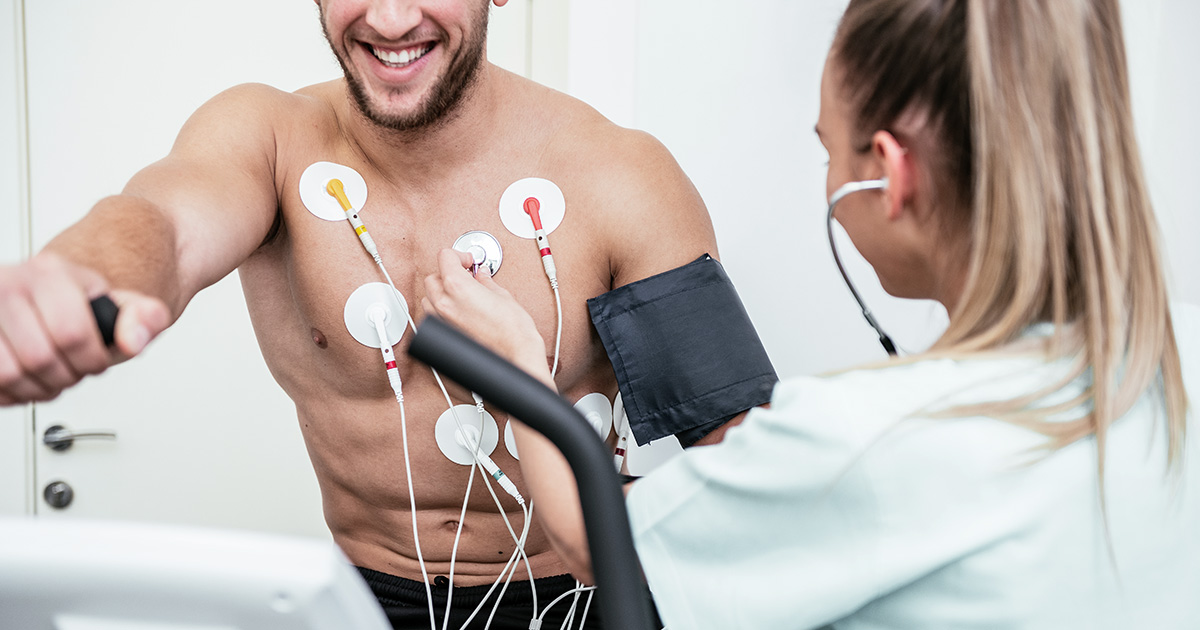Tilt Table Test

diagnosis
table of contents
What is Syncope?
What is Tilt Table Test?
How to prepare for the test?
Should I take my medications?
How is Tilt Test performed?
How long does it take?
How safe is it?
What happens after a tilt-table test?
What information is provided by tilt test? How quickly will I get the results of the test?
What is Syncope?
There are several causes of fainting spell (syncope). One of them is the Autonomic Nervous System Dysfunction or neutrally–mediated syncope.
Syncope is the brief loss of consciousness and posture caused by a temporary decrease in blood flow to the brain. Syncope may be associated with a sudden fall in blood pressure, a decrease in heart rate or changes in blood volume or distribution.
The person usually regains consciousness and becomes alert right away, but may experience a brief period of confusion.
Syncope is often the result of an underlying medical condition that could be related to your heart, nervous system or blood flow to the brain.
What is Tilt Table Test?
Tilt table test is one of the test the doctors use to help evaluate the cause of fainting spell particularly the Autonomic Nervous System Dysfunction or neutrally-mediated syncope.
Patient will be strapped to a table with a foot rest, on supine-horizontal position. The test room will be quiet and the light will be dimmed down. The table can be tilted from horizontal position to upright or near upright position.
Blood pressure and pulse will be monitored throughout the test. There will be protocol of degree of tilting the patient upward and timing of observation. Some patient may need medication to induce more blood pressure and heart rate change

How to prepare for the test?
- Don’t eat or drink for at least 4 hours before the test.
- If you will have a morning test, your doctor may tell you not to eat or drink after midnight the night before.
- If your test is in the afternoon, you can usually eat a light breakfast. Don’t eat lunch.
- If you take medicine, ask your doctor if you should keep taking it on your regular schedule before the test.
Should I take my medications?
- Yes. You can take your prescription medications as you normally would, with water. However, do not take diuretics or laxatives before the test.
- If you have diabetes, please request a 10:30 a.m. appointment time for your test so you may eat a light breakfast before 7 a.m. and also complete the test in time for lunch.
- If you have questions or need help making adjustments to your medications, please call your referring physician. Do not discontinue any medication without first talking to your healthcare provider.
How is Tilt Test performed?
Part One. The first part of the test shows how your body responds when you change positions.
- You lie on your back on a table. Straps at your waist and knees help you stay in position. An IV (intravenous line) is put in your arm. Small discs with wires are attached to your chest and are connected to an ECG (electrocardiograph) machine to track your heartbeat. A cuff on your arm measures your blood pressure.
- The nurse tilts the table so your head is slightly higher (30 degrees) than the rest of your body. The nurse checks your blood pressure and your heart rate.
- After about 5 minutes, the nurse tilts the table more. Now you are lying at a 60-degree angle or higher. The nurse continues to check your blood pressure and your heart rate for up to 15-45 minutes. The nurse will ask you to stay still and quiet during this time, but you should tell the nurse if you feel uncomfortable.
- If your blood pressure drops during this time, the nurse will lower the table and stop the test. You won’t need to take the second part of the test.
- If your blood pressure does not drop after the time is up, the nurse will lower the table and start the second part of the test.
Part Two. The second part of the test shows how your body responds to a medicine (Nitroglycerine) that causes your heart to beat faster and stronger. This medicine may make you feel as if you are exercising. It may make you more sensitive to the tilt-table test if your blood pressure didn’t change during the first part of the test.
- The nurse gives you medicine.
- Next, the nurse tilts the table upwards to a 70 degrees angle.
- You may feel your heartbeat increase because of the medicine.
- If your blood pressure drops, the nurse will lower the table to the flat position, stop the medicine, and the test will end.
- If your blood pressure does not drop after about 15-20 minutes, the nurse will lower the table and the test will be over.
How long does it take?
The tilt-table test can last about 90 minutes if you do both parts of it. If you only do the first part, you may be done in 30-45 minutes.
How safe is it?
There are few risks. People seldomly faint during tilt-table tests. And even if they do, it’s safer than fainting on your own in an uncontrolled situation. If a person does faint, usually they feel well again within a minute or so after the table returns to a flat position.
What happens after a tilt-table test?
You may feel tired and a little sick to your stomach right after the test. You may stay in a recovery area for 30 to 60 minutes so nurses can keep track of your blood pressure and heart rate. After recovery, most people can drive home and return to their normal activities. However, if you lose consciousness during the test, you may need to have more observation and testing. Don’t drive home if you have fainted.
What information is provided by tilt test? How quickly will I get the results of the test?
You may get your results as soon as the test is over. Sometimes your doctor will give you the results a few days later. Results are either “negative” or “positive.”
- If your blood pressure does not fall during the test, and you have no other symptoms, the test results are negative (normal).
- If your blood pressure drops during the test and you feel faint or dizzy, the test is positive. Your doctor may suggest changing your medicines or having more tests. If your fainting is due to a slow heart rate (bradycardia), your doctor may recommend a pacemaker or any other options for treatment.

